Major Studio: Interface
In this class, we studied how people interact with the world around them. And we designed all manner of crazy things.
Boxes (Round 1)
Our first assignment was to build three boxes with different materials or other properties. I made these three in stackable sizes and varying opacities.

| Attachment | Size |
|---|---|
| dcam0863.jpg | 93.05 KB |
Boxes (Round 2)
Then we had to make fifty boxes! I used a survey and a genetic algorithm over the course of four generations to determine which boxes came out on top.
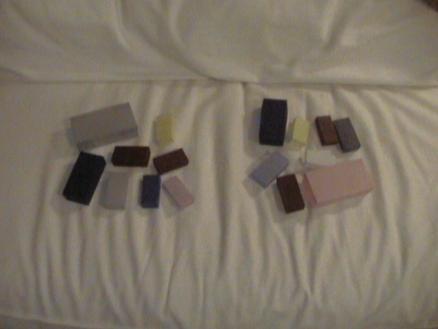
More Boxes (Early Generation)
Here's an earlier generation of the boxes project for interface class. Most of these were "killed" later by the genetic algorithm I used to generate more boxes.
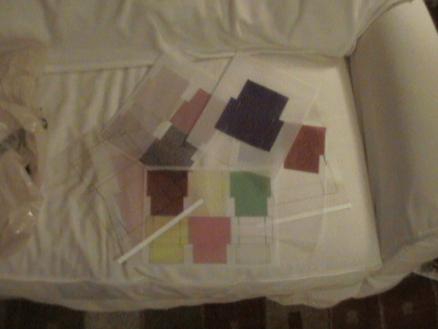
More Boxes (Later Generation)
This is a later generation of boxes. The losers are on the right. My genetic algorithm evaluated each box based on preferences I got from people in surveys. The genome of each box contained its color, size, opacity, and saturation. Clearly, the transparent ones were not the fittest. The red ones were quite successful, though.
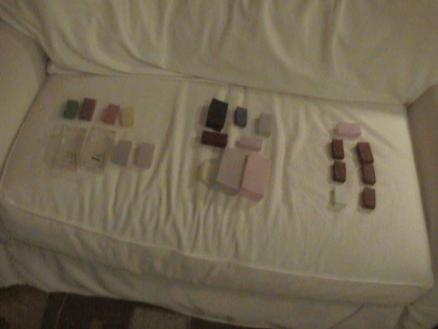
More Boxes (The Dustbin of History)
Once I was finished with the boxes, the ones that never made the cut were crushed. Think of my foot as the Permian-Triassic extinction event.
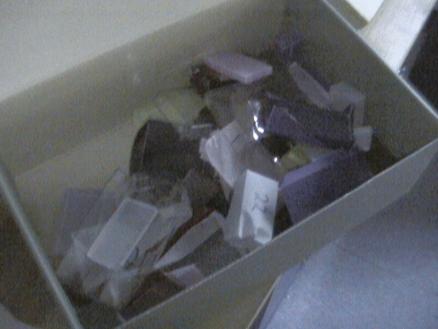
The Algorithm
This is the python script I used to determine the winners and losers among my box designs. Each box had a genome that encoded its color, saturation, size, and opacity. Boxes with more votes were allowed to mate. The rest were crushed. Circle of life.
| Attachment | Size |
|---|---|
| box_gene.py.txt | 2.12 KB |
LargoCargo - Stuff for a Slow World
LargoCargo was a project that incorporated yet another box form to serve as a product for one of the worlds described in Einstein's Dreams. Ours were surprise boxes that children could collect and then smash in a "yearly" festival. The idea would be to disseminate propaganda among the young so they would never leave their parents in a world where time ran much, much slower than the rest of the world. Wacky stuff.
Above is our "Why/How" diagram that analyzed the situation in this fictional world and which led to our LargoCargo product.

LargoCargo Box - Anger
This is a box cover Alan designed. The idea was to create images for kids showing what awaits them in the outside world if they should ever leave their parents. In the "slow" time-dilated world in which they lived, parents never wanted to let their kids go. Read Einstein's Dream, and that will make more sense--we had to design these for a world depicted in that book.

LargoCargo Presentation
The LargoCargo project was our midterm for Major Studio: Interface. Here is our presentation.
Map of My Commute
This is a map of my commute. It measures noise, human movement, personal space, speed, and location in the course of my trip from home to Parsons.
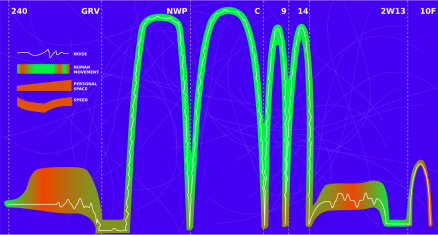
Commute Map
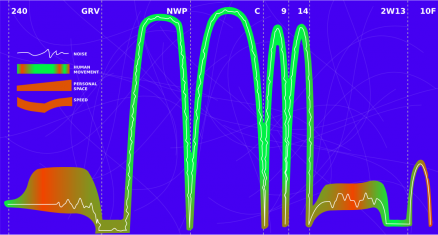
Observation
There are my condensed observations of the PATH station near where I live. Beware of the hard-ass Port Authority Police Department -- they do NOT like you taking photos of the station. It does help to say you're from the neighborhood, though.
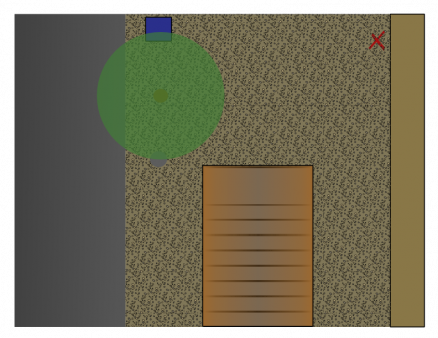
Observation - Mail Drop
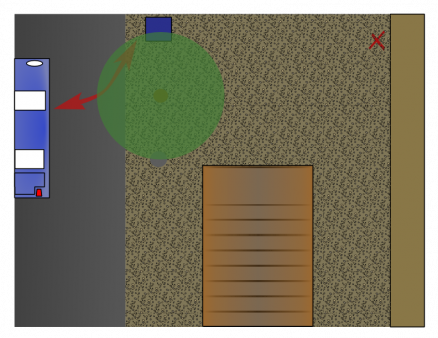
Observation - NJ Transit Bus Out
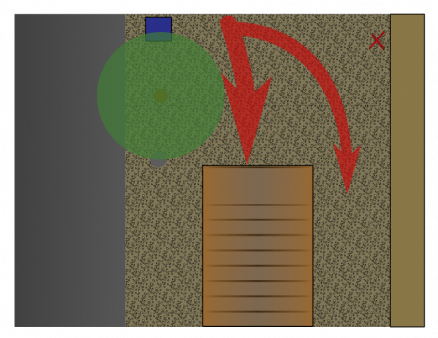
Observation - PATH In

Observation - PATH Out
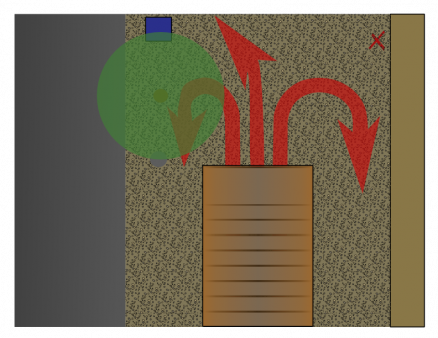
Observation - Pedestrians
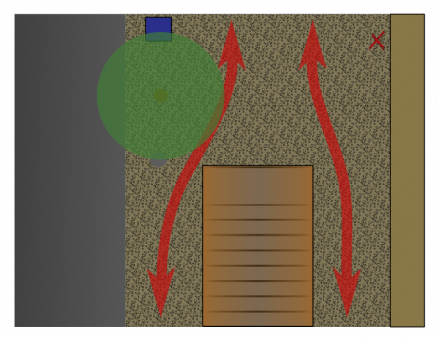
Observation - Taxi Stand
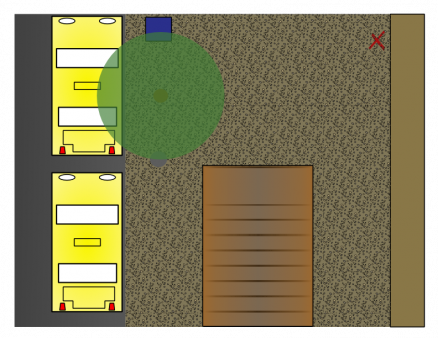
Elevator Dictionary
Hsinping Dai and I made a non-verbal dictionary for communicating about a subject in an elevator. That subject? What to do when somebody farts.
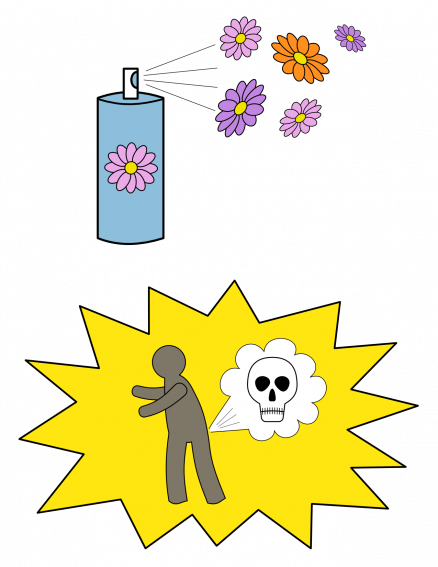
Elevator Dictionary 2
Elevator Dictionary 2

Elevator Dictionary 3
Elevator Dictionary 3

Elevator Dictionary
Hsinping and I made a visual dictionary for people on an elevator together to communicate with each other, dealing with a very delicate subject. See if you can guess what it is!
| Attachment | Size |
|---|---|
| dictionary03.png | 102.91 KB |
| dictionary02.png | 101.54 KB |
| dictionary01.png | 212.17 KB |
Renga Game Board
I've long been an admirer of the Japanese renga, a collaborative poetic form. One of the major drawbacks, however, is trying to remember the rules. Each person participating must write a two- or three-line stanza using a pre-determined subject, usually a season of the year. In an autumn renga, shown here, the first writer begins with a three-line verse about autumn. The next writer completes a two-line verse about the moon, which is usually related to autumn.
The game board above really nicely condenses these rules. Even though this was just a simple assignment, it solved a long-standing problem for me. I'll most likely continue working on this project in the future. If you're curious about the form or this version of it, download the attached SVG below and print it out on nice paper. Included is a layer that holds the colored squares you can use to write the renga verses. I strongly recommend you use a size of paper bigger than 8.5 x 11, and I suggest you open it with the outstanding SVG editor, Inkscape.
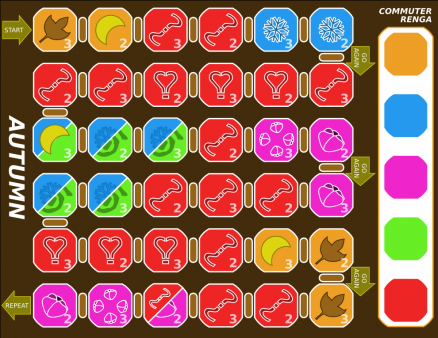
Journal Square Deli
For our final project, my group was required to select a location, identify two groups there, and get them to interact in anyway we chose. We picked the deli inside the Journal Square PATH station. It turned out to be an amazingly difficult but rewarding project.
Depicted above is one of our observation sheets. Every 10 minutes, during the course of over 20 hours observing, we noted which patrons sat where, their gender, their approximate age, and their activity at the table. In so doing, we collected a truly huge amount of data that allowed us to make predictions about who would sit where for the longest period and which demographic they would most likely represent.
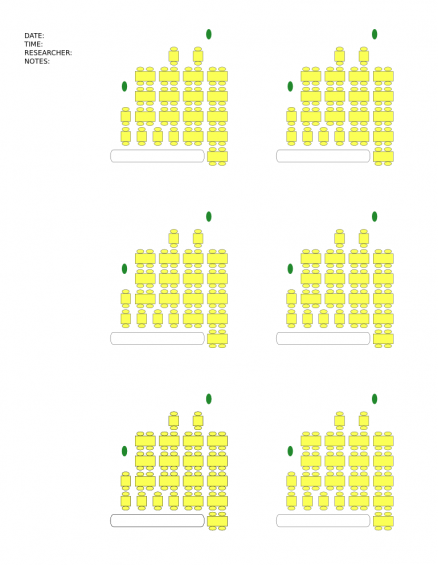
Journal Square Deli - Bingo
Our first attempt to intervene in the Deli. Bingo! Like travel bingo, but with deli stuff.
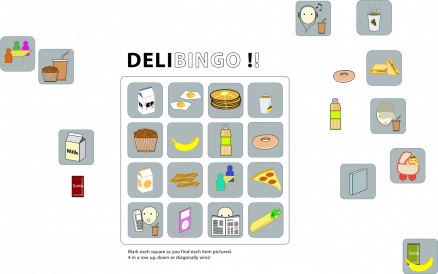
Journal Square Deli - Data
Attached is the raw data from our deli observations. Over 600 entries. Never let it be said we aren't thorough.
| Attachment | Size |
|---|---|
| delistats.xls | 193.5 KB |
Journal Square Deli - Deli Oracle Volcanos
"Lot pots." Left on tables in the deli to get people involved in their tables and with each other. Each pot has a set of fortunes that require you to interact with other tables. Weird looking, but fun.

Journal Square Deli - The Restaurant Telegraph
The ultimate in deli interventions--the Restaurant Telegraph! Each half is place on a separate table. The switch lights up the lamp and sets off a sound. Cool, though much more fun in bars than in the Journal Square Deli, as it turned out.
Attached is the SVG file for the labels, in case anyone wants to repeat the experiment.
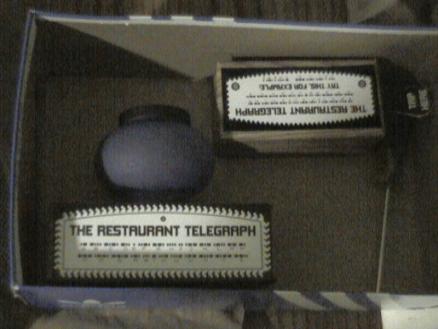
Journal Square Deli - Presentations
These are our presentations for the Journal Square deli project. They're huge downloads, but well worth it if you're fascinated by Jersey-City commuter dining. And, be honest, you know you are.
In all seriousness, this was a very challenging project and well worth the considerable effort. We learned a lot and built interesting things. What more could you ask for?
